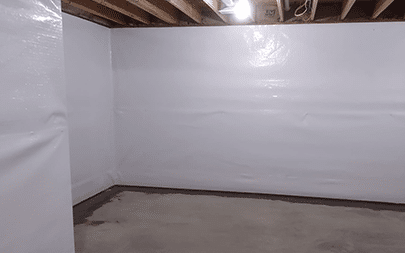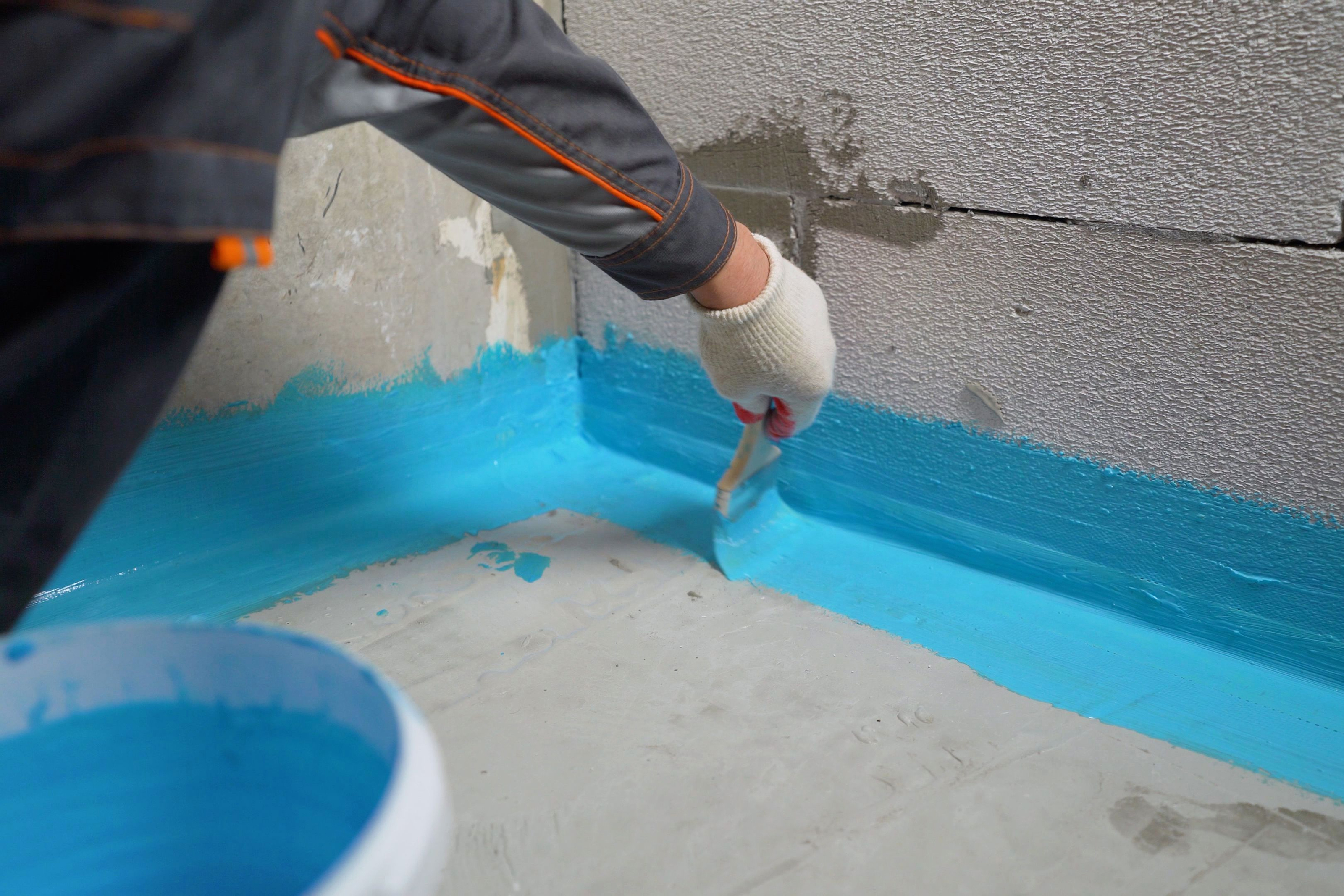Discovering the Various Methods of Cellar Waterproofing and Their Benefits
Basement waterproofing is important for maintaining a secure and completely dry atmosphere. Different methods exist, each with unique benefits. Interior sealants shield versus wetness invasion, while exterior systems attend to drain problems. Sump pumps and French drains handle water successfully, and dehumidifiers manage humidity degrees. Understanding these alternatives can aid homeowners make informed decisions. The appropriate remedy usually depends on details conditions and demands. What aspects should one think about when choosing the most effective approach?
Inside Sealants: A Reliable Obstacle Versus Wetness
Interior sealants serve as an important line of defense versus dampness breach in cellars. These items are designed to create a water-proof obstacle on wall surfaces and floorings, efficiently protecting against water from seeping in. Readily available in numerous kinds, consisting of sealants, finishes, and paints, they can fill fractures and pores in concrete, making sure a much more safe environment.The application process generally entails cleaning up the surfaces to remove dust and debris, followed by the careful application of the sealer. Once healed, these items enhance the longevity of the basement while lowering humidity degrees, which can lead to mold and mildew development and structural damage.Moreover, indoor sealants are commonly easy to apply and can be an economical solution for house owners looking to minimize wetness concerns. By offering a trusted layer of protection, they play a crucial duty in protecting the cellar space, protecting both its honesty and usability.
Exterior Waterproofing Equipments: Protecting Your Foundation
Outside waterproofing systems use a durable option when house owners look for to secure their structures from water damages. These systems normally include applying water resistant membranes and drainage systems to the outside wall surfaces of a cellar. By developing an obstacle versus groundwater, they successfully stop dampness from passing through the foundation (Water Solutions Omaha).One noteworthy advantage of exterior waterproofing is its ability to resolve the resource of water breach prior to it gets to the inside. This positive technique not just safeguards structural integrity yet likewise enhances the longevity of the home.Moreover, exterior systems can improve the total water drainage around the structure, minimizing hydrostatic pressure. This decreases the possibility of cracks and heaving that can arise from water accumulation. Because of this, house owners can delight in a completely dry, stable cellar atmosphere, considerably improving residential property value and convenience. Ultimately, outside waterproofing systems are a crucial financial investment in preserving a healthy and balanced home foundation
Sump Pumps: Taking Care Of Water Build-up Successfully
Sump pumps play a necessary role in handling water accumulation in cellars, offering a reliable option for homes prone to flooding or excess dampness. These devices are set up in sump pits, generally situated at the most affordable point of a basement, where they accumulate water that seeps in from the bordering soil. When the water level climbs, the sump pump triggers, effectively pumping out the excess water to an assigned water drainage area, thereby stopping prospective damage to the foundation and interior spaces.There are 2 primary kinds of sump pumps: completely submersible and pedestal. Completely submersible pumps are installed underwater, making them much less noticeable and frequently quieter, while stand pumps are situated above the sump pit and are much easier to keep. By effectively managing water build-up, sump pumps not just guard against structural damage but likewise add to a healthier living atmosphere by reducing humidity levels and avoiding mold development.
French Drains: Rerouting Water Far From Your Home

Dehumidifiers: Decreasing Humidity Levels for a Drier Environment
Basement waterproofing involves various strategies, and dehumidifiers play a significant role in maintaining a completely dry environment. By effectively reducing humidity levels, dehumidifiers aid protect against dampness buildup, which can lead to mold and mildew development, architectural damage, and unpleasant odors. These gadgets work by extracting excess moisture from the air, creating a healthier and more comfy space.In addition to enhancing air high quality, dehumidifiers can improve the effectiveness of various other waterproofing techniques, such as sealing and drainage systems. They aid preserve perfect moisture degrees, usually between 30% and 50%, which is essential for stopping condensation on walls and floors.Moreover, modern-day dehumidifiers are Discover More Here energy-efficient and included features like programmable setups and automatic shut-off, making them user-friendly. On the whole, his explanation including a dehumidifier into cellar waterproofing plans gives a crucial layer of security against moisture-related concerns, thus safeguarding the home's honesty.
Frequently Asked Inquiries

Exactly How Long Do Waterproofing Solutions Generally Last?
Waterproofing services typically last between 5 to 20 years, depending on the method used, quality of materials, and environmental problems. Regular maintenance and inspections can help extend their effectiveness and overall lifespan.
Can I Waterproof My Basement Myself?
The specific considered whether to water-proof the cellar individually. They found that while do it yourself choices exist, understanding of strategies and products is vital to ensure performance, and professional support might provide better long-term results.
What Are the Signs of Cellar Dampness Issues?
Indications of basement dampness concerns include visible water stains on wall surfaces, stuffy odors, peeling off paint, mold growth, and wetness on floorings. High humidity degrees may additionally indicate underlying dampness problems calling for interest to avoid more damage.
Just How Much Does Basement Waterproofing Price?
The expense of cellar waterproofing varies commonly, normally varying from $1,500 to $5,000. Factors affecting expenditures include the extent of moisture concerns, the selected approach, and the geographical area of the building.
Will Waterproofing Increase My Home's Value?
The inquiry of whether waterproofing enhances a home's worth often occurs amongst property owners. Normally, reliable waterproofing can enhance building appeal, reduce damages threats, and potentially result in greater resale rates, depending upon the regional actual estate market. By creating a barrier versus groundwater, they effectively avoid dampness from penetrating the foundation.One noteworthy benefit of outside waterproofing is its ability to attend to the resource of water breach prior to it gets to the inside. Sump pumps play an important function in taking care of water accumulation in basements, supplying an efficient remedy for homes vulnerable to flooding or excess moisture. When the water level rises, the sump pump triggers, successfully pumping out the excess water to a marked drainage area, consequently protecting against possible damages to the foundation and indoor spaces.There are 2 main useful content types of sump pumps: submersible and pedestal. Water Solutions. By routing groundwater and surface area water away from the structure, French drains pipes aid stop water build-up in basements and creep rooms, lowering the danger of architectural damage and mold growth.Installation commonly takes place around the perimeter of the home, ensuring that water is successfully drawn away. Signs of cellar wetness issues consist of visible water stains on wall surfaces, moldy smells, peeling off paint, mold development, and dampness on floorings